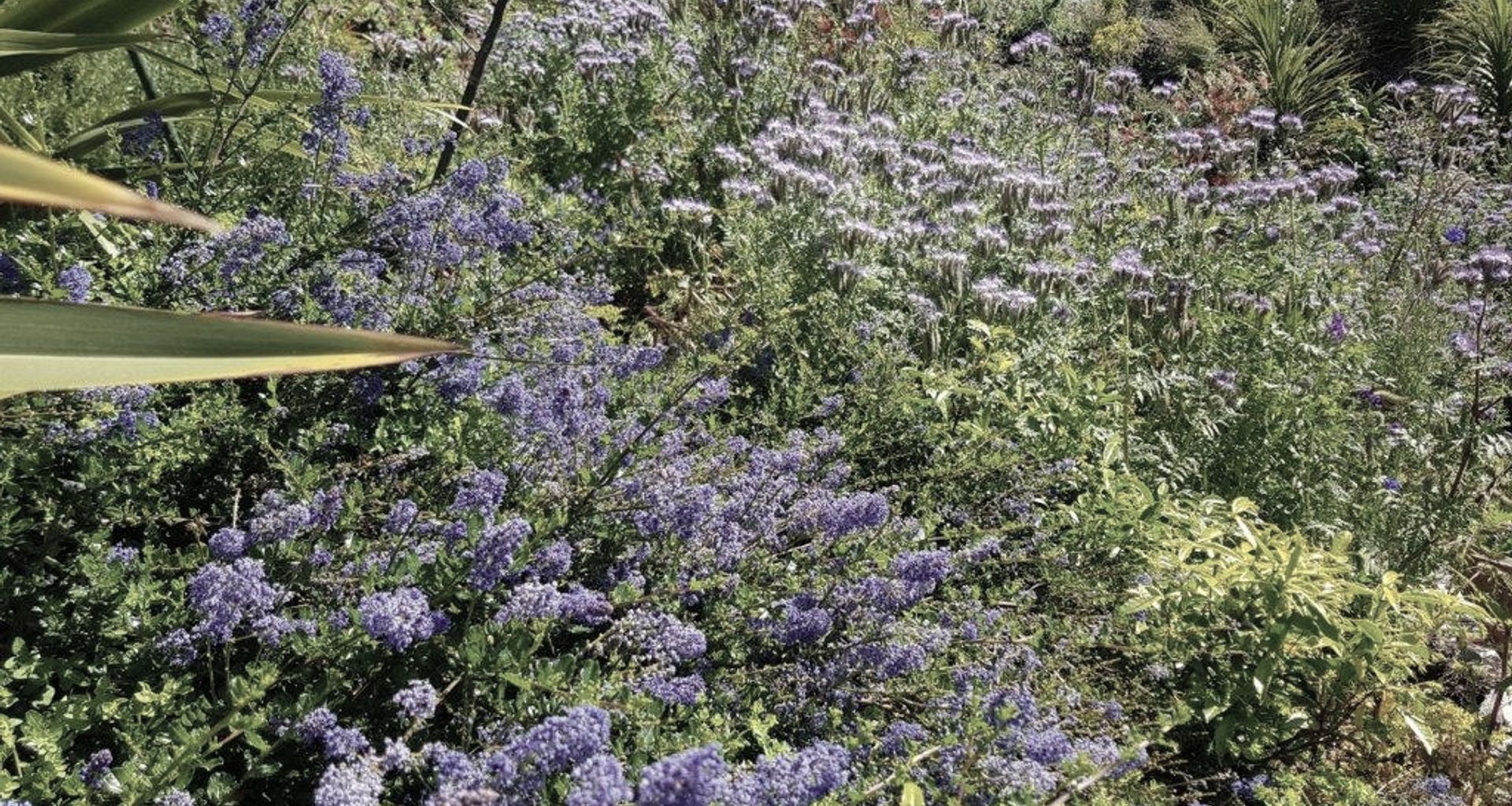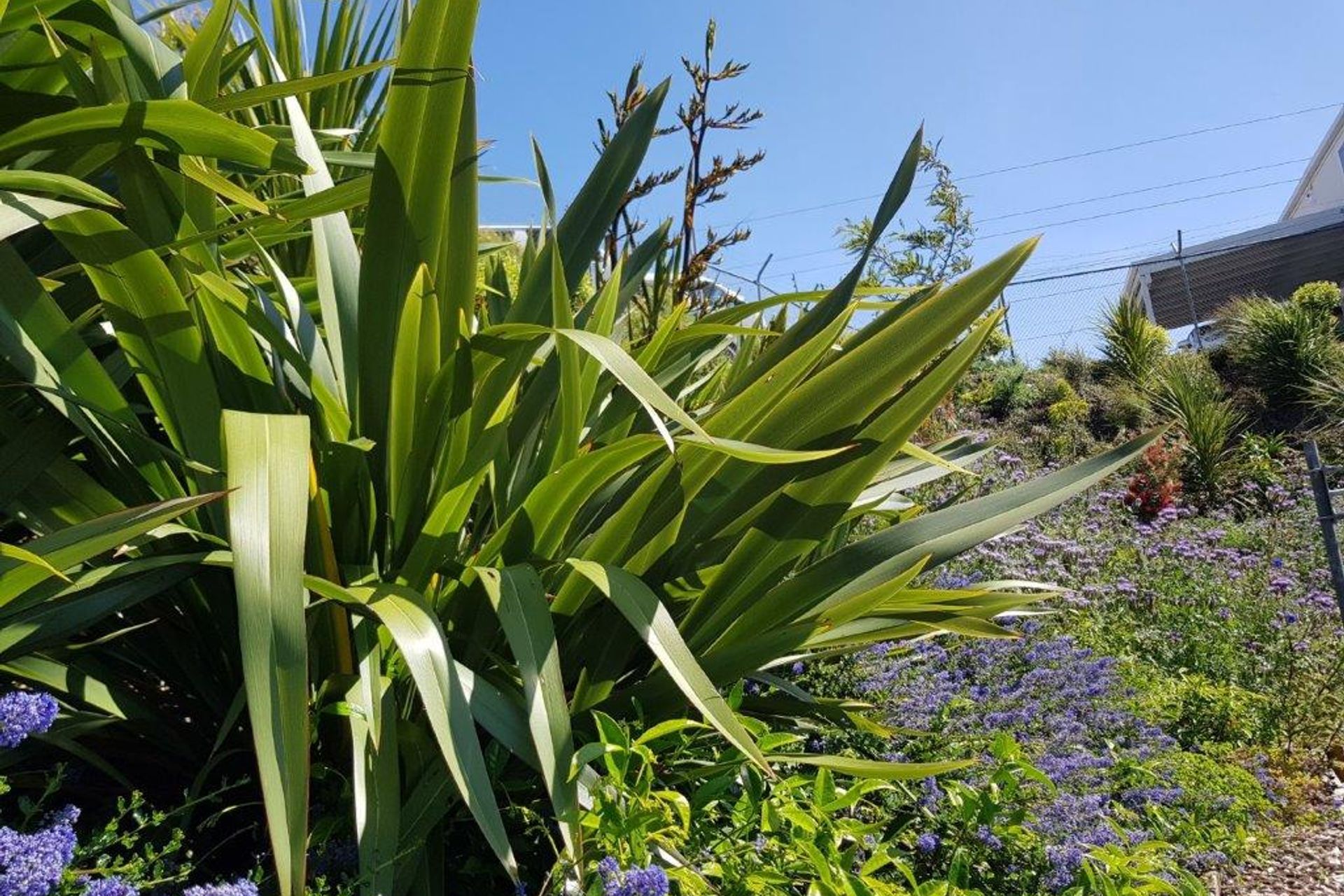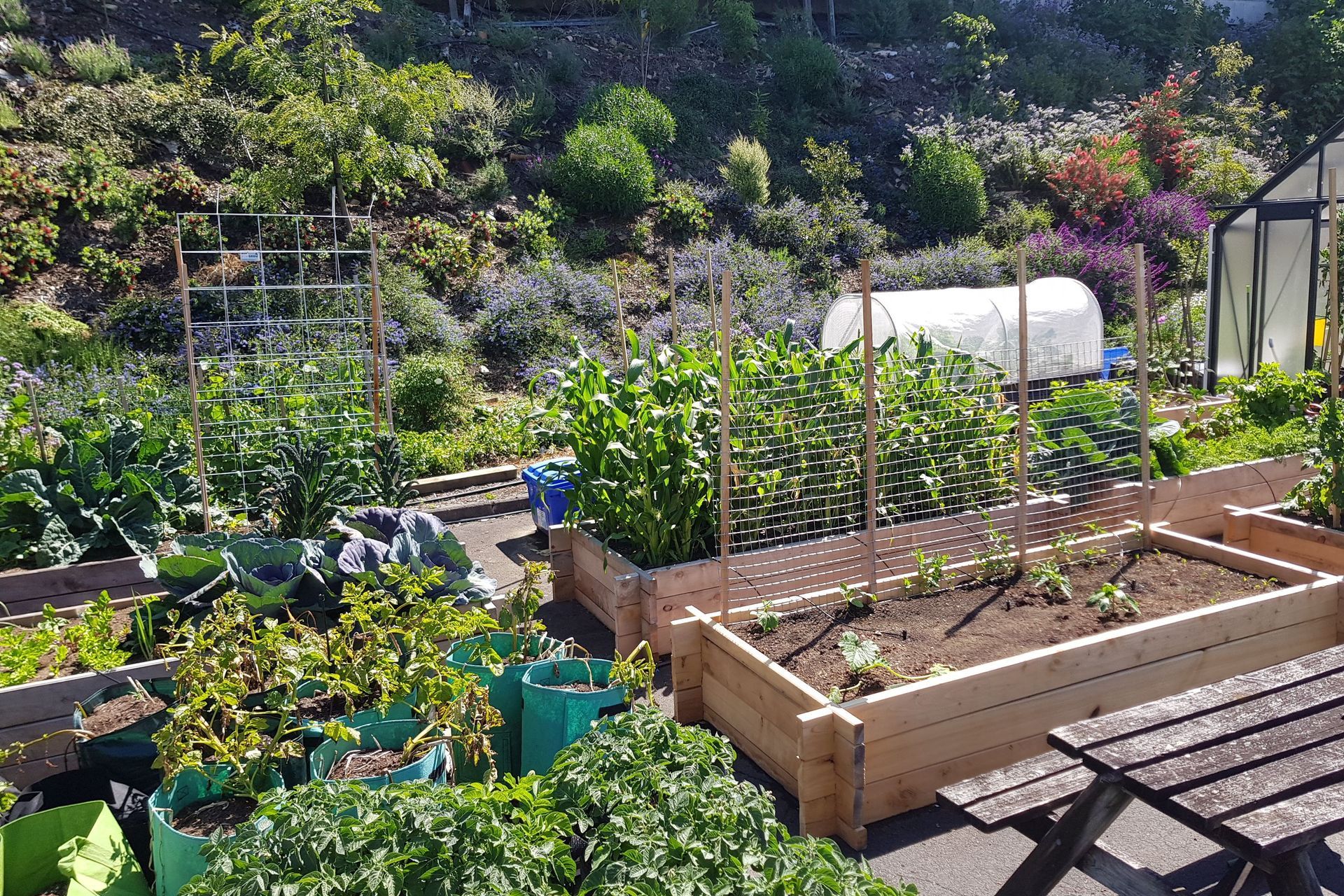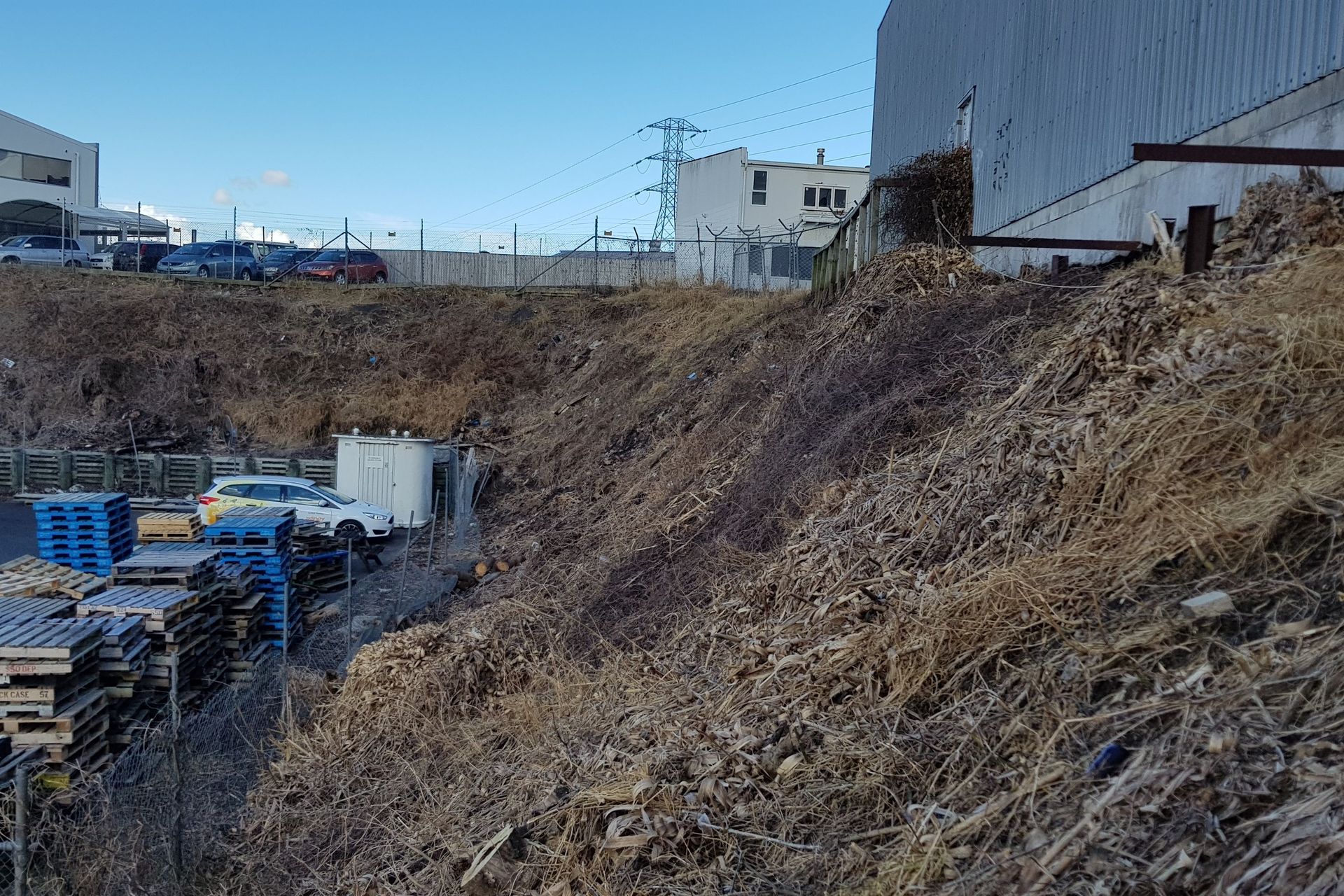From industrial wasteland to a bio-diverse garden

From industrial wasteland to a bio-diverse garden
Tip to Treasure
This project was implemented for a visionary client who wanted to transform a 2000m2 industrial wasteland into a bio-diverse garden, with a special focus on pollination. The client’s business markets honey-based products, has bee hives on site and he is a keen vegetable gardener. The garden and hives form a part of his business brand story and are also is his personal passion.
This brief resonated with Chris, one of the directors of Second Nature, also a hobbyist beekeeper and passionate urban gardener. He relished the opportunity to be involved in the rehabilitation of this industrial wasteland. This project had the potential to be an exemplar of what is possible in this type of environmentally compromised space, transforming it from a tip site to an abundant, diverse and productive ‘garden’.
The steeply sloping embankments were covered in invasive weed species – Privet, Pampas, Wattle, Gorse, Climbing Dock, Honeysuckle and Convolvulus. Adjacent businesses had been dumping their waste over the bank for decades. Clearance of the site was a major undertaking requiring the removal of several truck and trailer loads of waste. On-going weed control will be required to ensure the success of the project.
All plant species were selected for their nectar and pollen producing characteristics. The plants are an entirely eclectic mix of wildflowers, natives, flowering trees, shrubs and perennials which combine to provide year-round nectar and pollen sources. The garden was planted in September 2018.
The garden is now a riot of colour and is totally alive with bees, birds, butteries, insects, lizards and invertebrates. Life is attracted to the space. It feels like an oasis in an industrial wasteland. This garden wonderfully illustrates that, with some encouragement, latent life can flourish when a suitable habitat is created.



